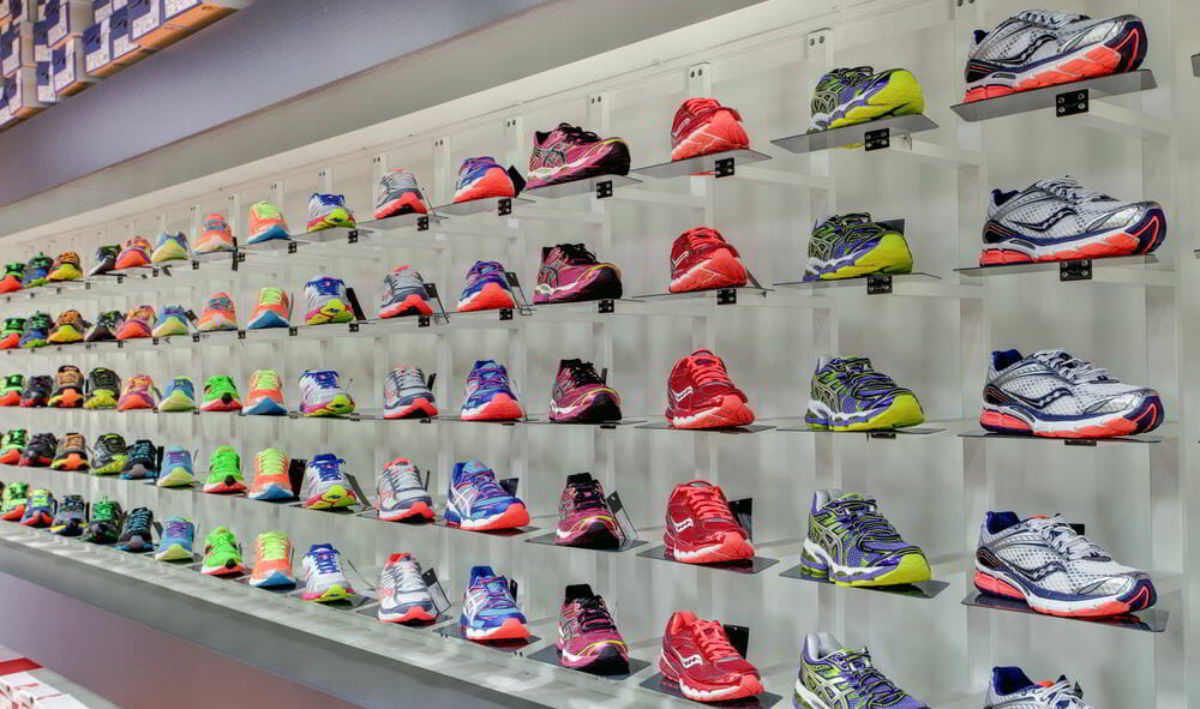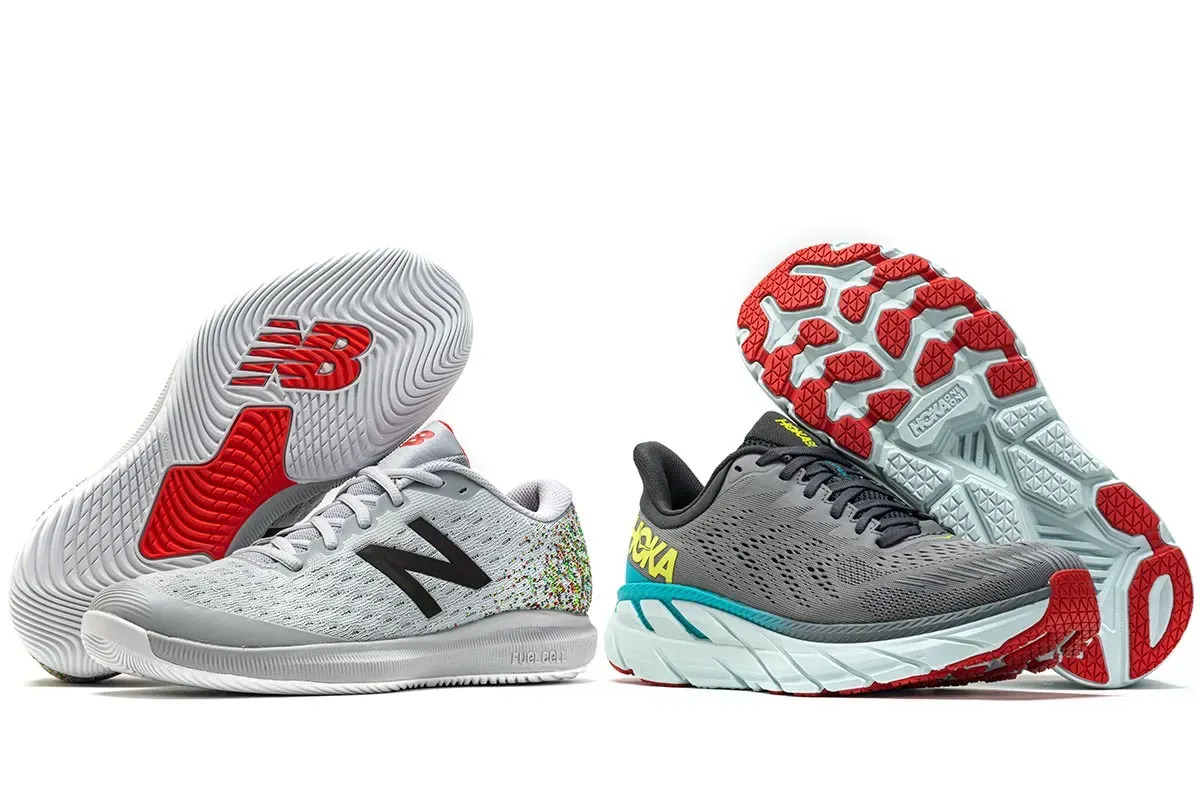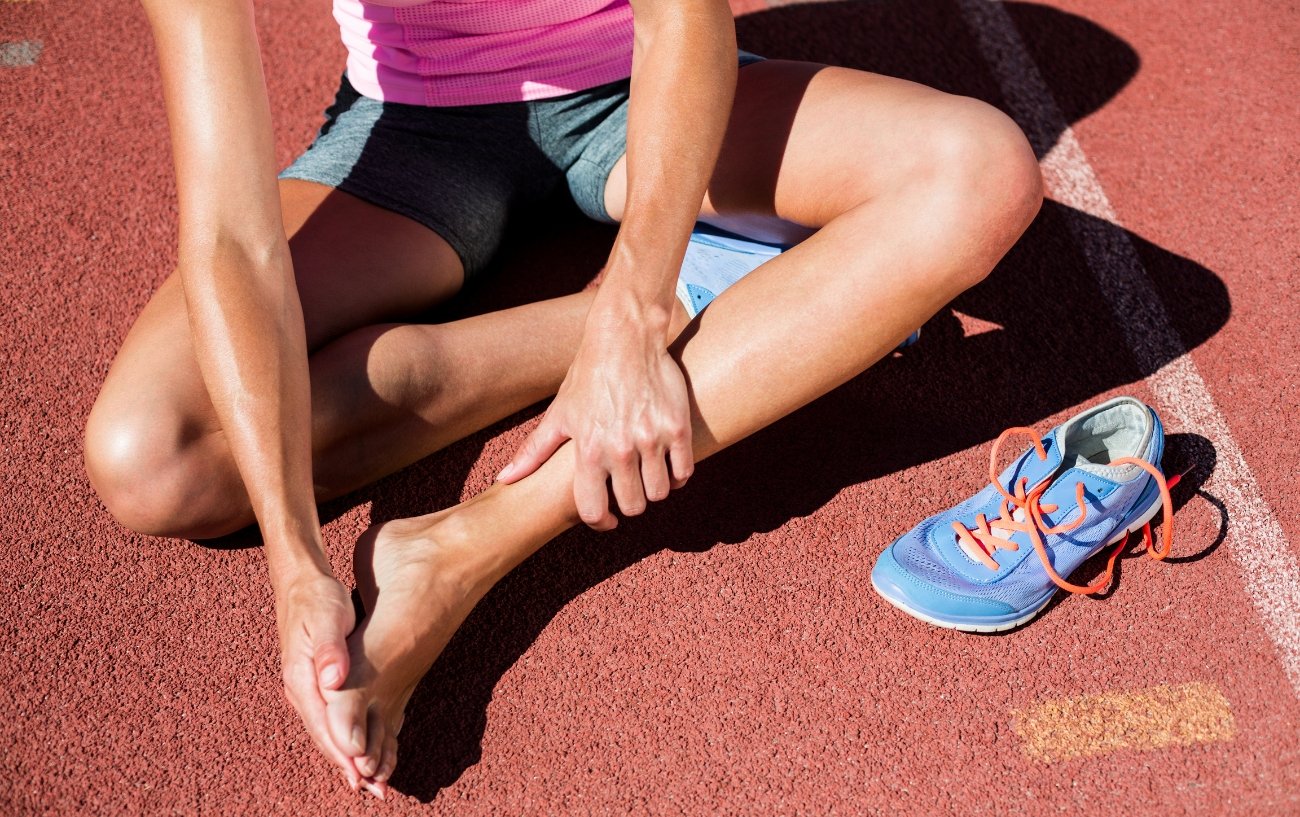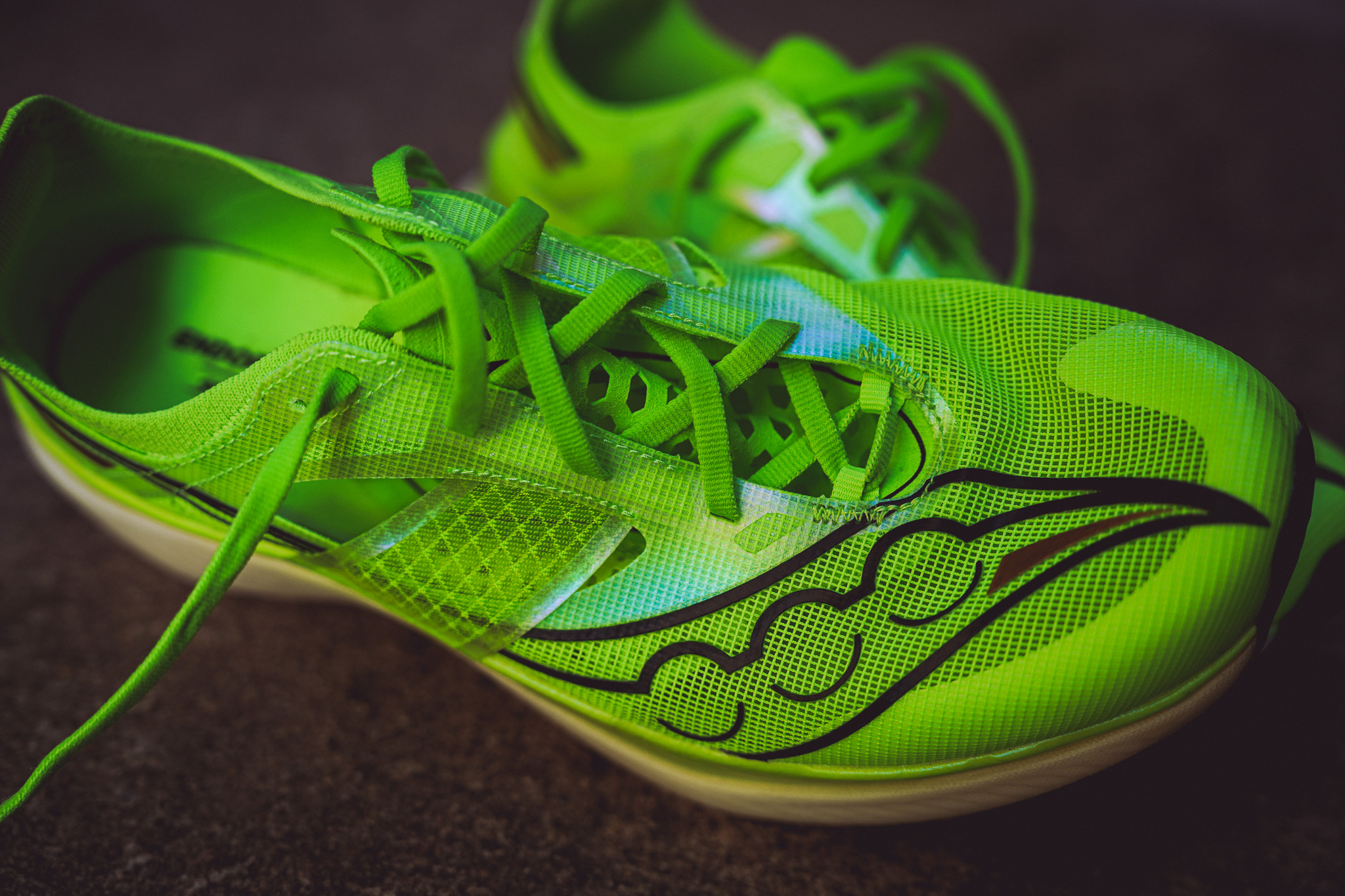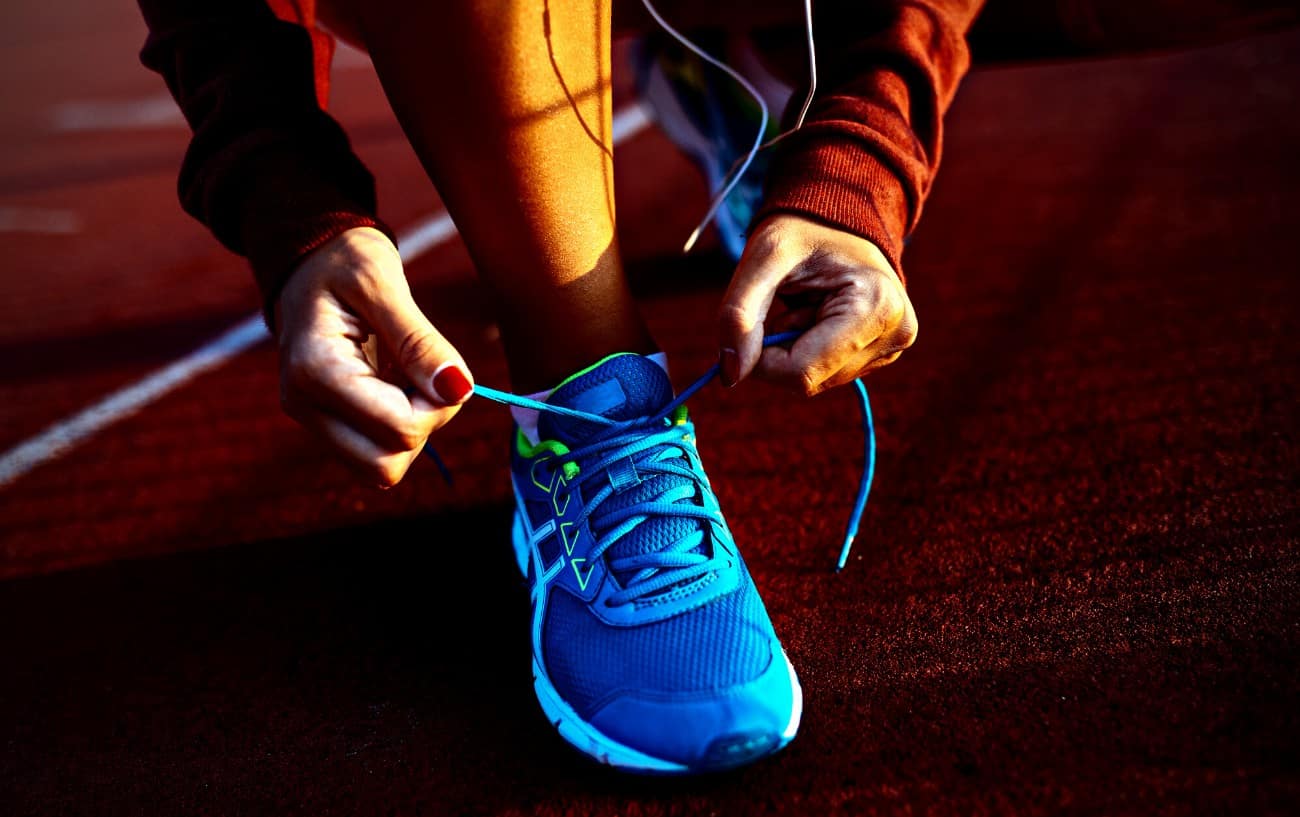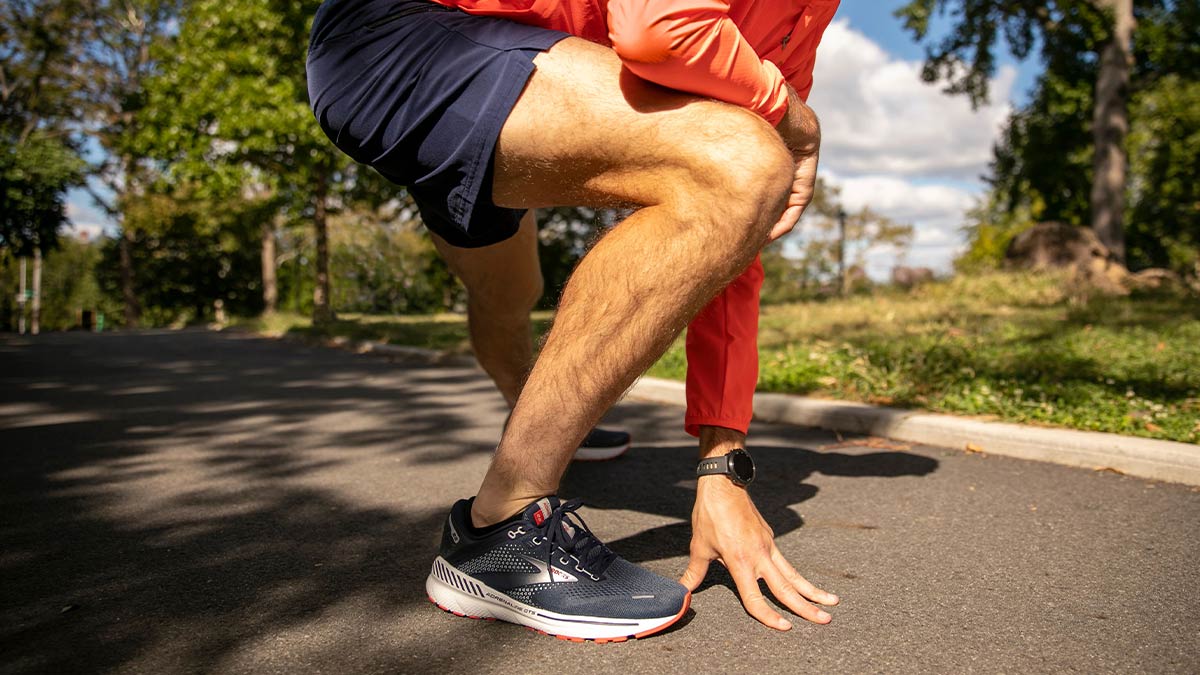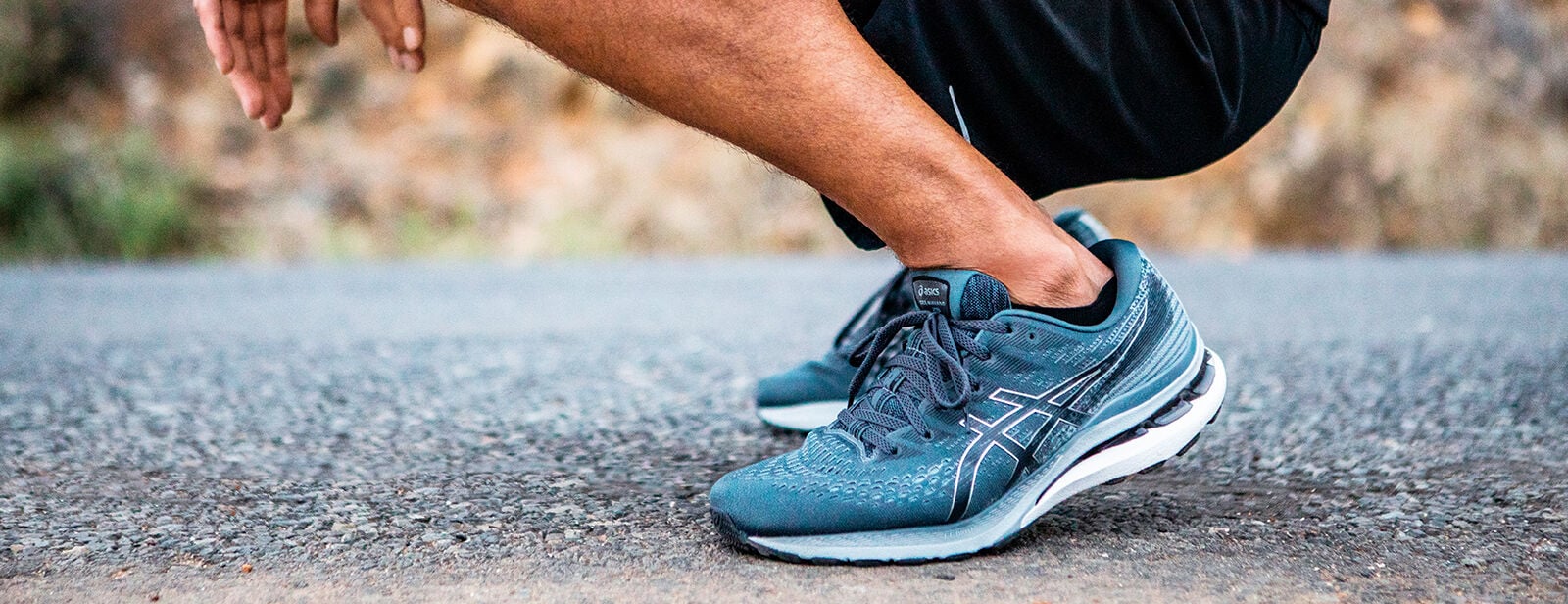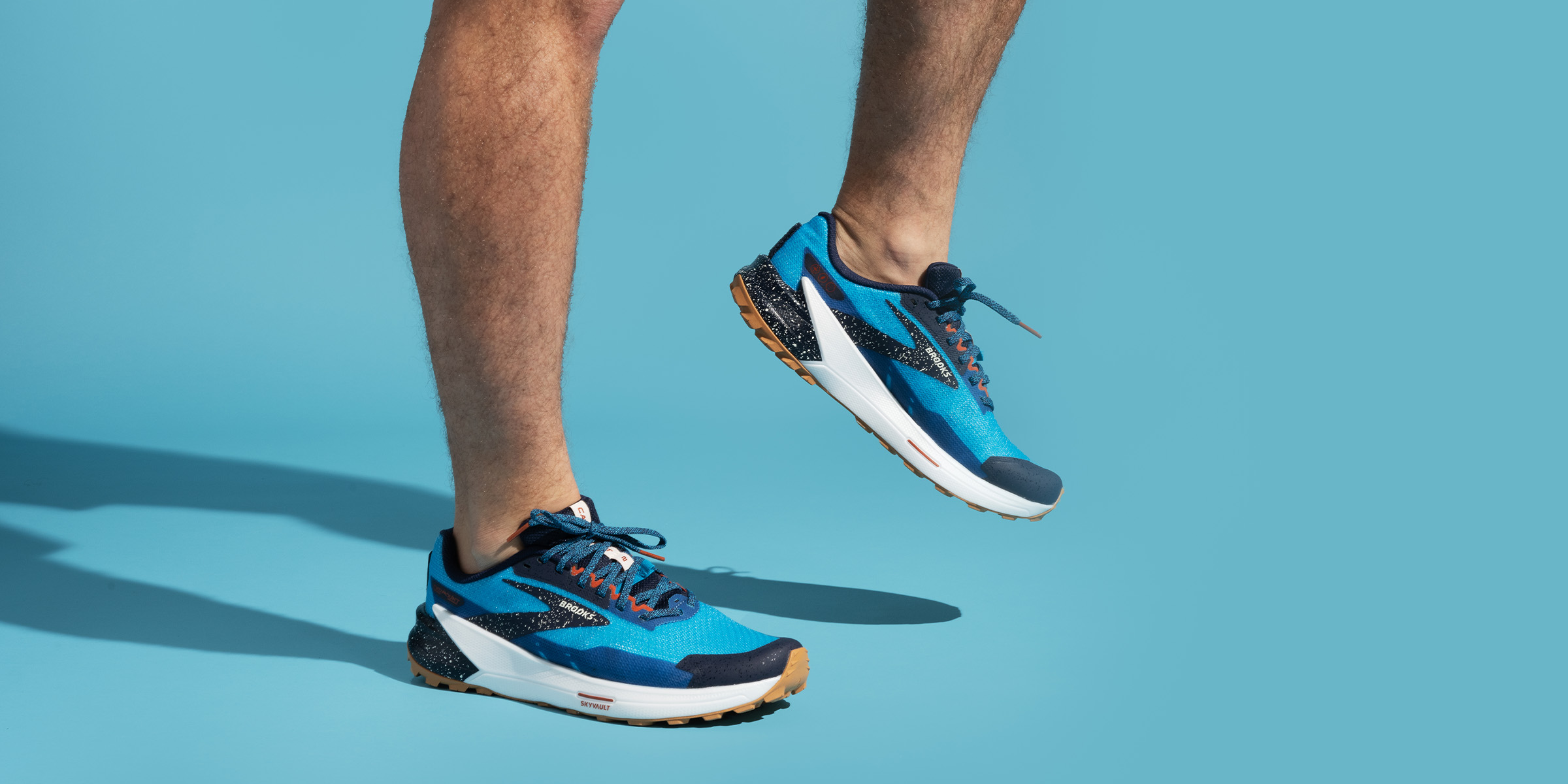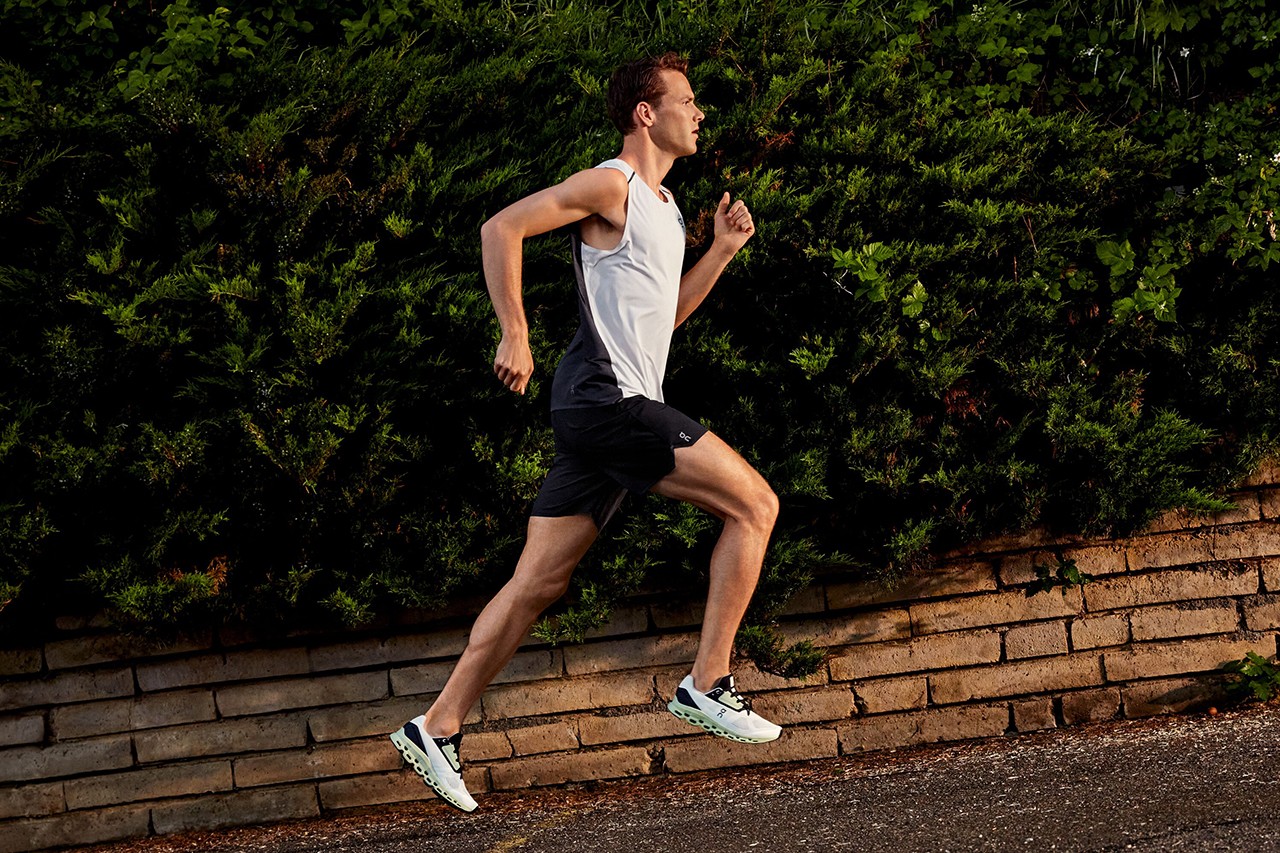Home>Misc>Featured>Which Running Shoes Are Best For Those That Pronate
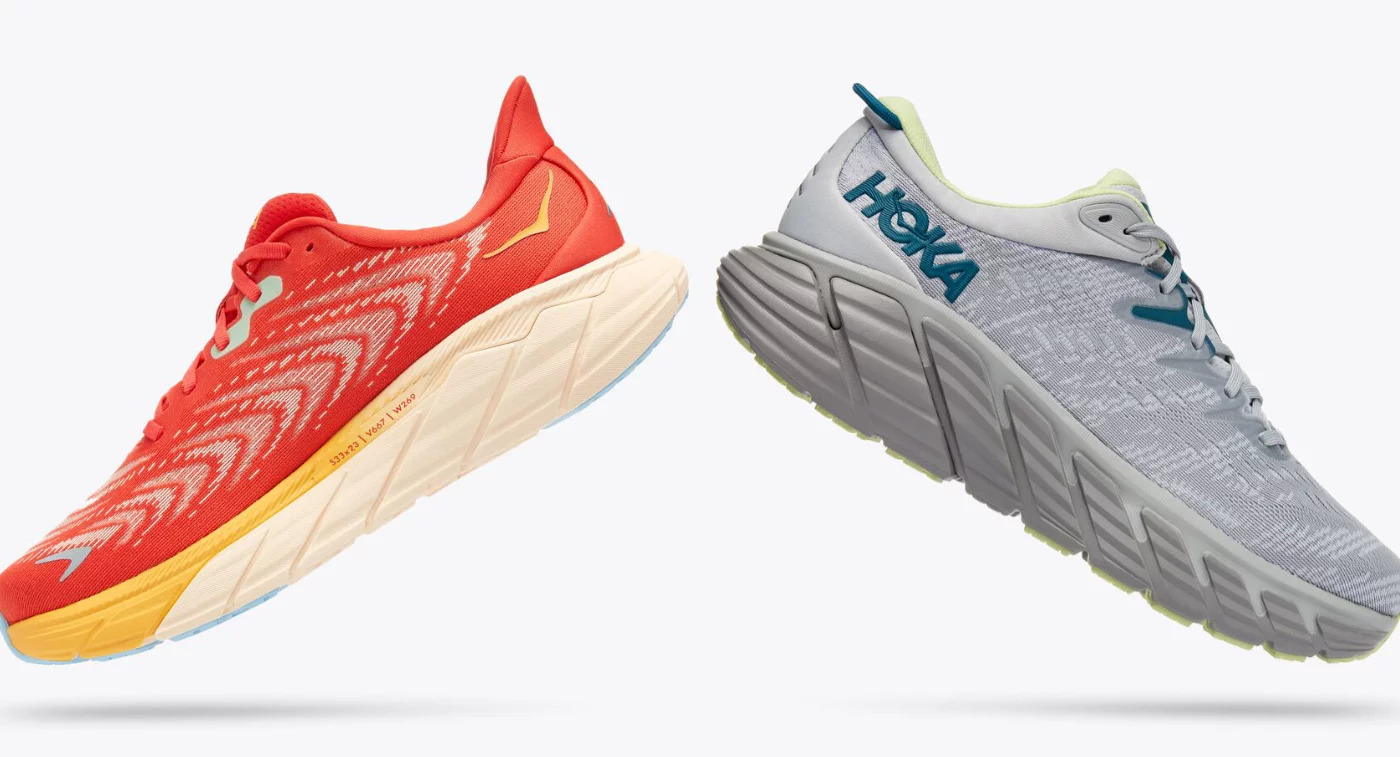

Featured
Which Running Shoes Are Best For Those That Pronate
Modified: August 19, 2023
Discover the top featured running shoes for individuals with pronation, helping to provide stability and support during your runs. Find the best options here!
Introduction
Choosing the right running shoes is essential for any runner, but it becomes even more crucial for those who overpronate. Overpronation is a common issue that affects many runners, and it refers to the inward rolling motion of the foot during the running gait. This motion can lead to various problems like knee pain, shin splints, and even injuries.
If you are unsure whether you pronate or not, don’t worry, you’re not alone. Many people are unaware of their pronation type, which is why it’s important to determine it before selecting the appropriate running shoes. Understanding your pronation pattern can make a significant difference in your running performance and overall comfort.
In this article, we will explore what pronation is, how to identify your pronation type, and the best running shoes for those who overpronate. Whether you’re a beginner runner or a seasoned athlete, this information will guide you in making informed decisions when it comes to choosing the right footwear for your running needs.
It’s important to note that every individual’s pronation pattern is unique, and there is no one-size-fits-all solution. However, by understanding the different types of running shoes designed to address overpronation, you can increase your chances of finding the perfect fit for your running style.
What is Overpronation?
Overpronation is a common biomechanical issue that occurs when the foot rolls inward excessively during the running or walking gait. This inward rolling motion can put stress on the foot, ankle, and other parts of the lower body, potentially leading to various problems and injuries over time.
When we walk or run, our feet naturally go through a pronation cycle. Pronation is the natural movement that allows our feet to adapt to uneven surfaces and absorb shock. However, excessive pronation, or overpronation, can throw off the body’s alignment and cause imbalances.
There are different degrees of overpronation, ranging from mild to severe. People who overpronate may have flat feet or low arches, which contribute to the excessive inward rolling motion. Overpronation can increase the risk of developing conditions such as plantar fasciitis, Achilles tendonitis, shin splints, and knee pain.
Identifying whether you overpronate is an essential step in determining the right running shoes for your needs. There are a few ways to check your pronation type:
- Wet Foot Test: Wet the soles of your feet and stand on a piece of paper or a dark surface. If your footprint shows most of your foot, including the arch, you likely have low arches and may be an overpronator.
- Gait Analysis: A gait analysis can be done at a running store or by a podiatrist or physical therapist. They will analyze your running or walking pattern to assess whether you overpronate.
- Foot Pain and Discomfort: If you experience pain in the arch, heel, shin, or knee after running or walking, it could be a sign of overpronation.
Remember that overpronation is a natural part of the pronation cycle, but excessive pronation can lead to imbalances and potential injuries. Identifying your pronation pattern will help you choose the right running shoes that provide the necessary support and stability for your feet.
How to Determine if You Pronate
Understanding your pronation type is crucial when selecting running shoes that cater to your specific needs. There are several methods you can use to determine if you pronate and to what degree:
- Wet Foot Test: This simple test involves wetting the bottom of your feet and standing on a surface that will leave a visible imprint, such as a piece of paper or a dark floor. By examining the shape of the imprint, you can gain insights into your arch type and pronation. If your footprint shows a complete or nearly complete impression of your foot, you likely have low arches and could be an overpronator.
- Gait Analysis: A gait analysis is a more comprehensive and accurate method of identifying your pronation type. It involves observing your running or walking mechanics and assessing how your foot strikes the ground. This analysis can be performed by professionals at specialized running stores, podiatrists, or physical therapists. They will analyze your gait, foot alignment, and the degree of pronation to provide valuable insights into your pronation type.
- Footwear Wear Patterns: Another indication of your pronation type can be observed by examining the wear patterns on your current running shoes. Overpronators tend to have wear on the inner edges of the soles, particularly in the heel and forefoot areas. This is a result of the excessive inward rolling motion during the gait cycle.
- Physical Discomfort or Pain: If you frequently experience pain or discomfort in your feet, ankles, shins, or knees after running or walking, it may be a sign of overpronation. Pay attention to any recurring pain or injuries and consult with a healthcare professional for a proper diagnosis.
By using a combination of these methods, you can gain a better understanding of your pronation type. It is important to note that pronation exists on a spectrum, with some individuals exhibiting mild overpronation and others experiencing severe overpronation. Understanding your specific pronation pattern will help you choose the appropriate running shoes to improve your comfort, performance, and overall foot health.
Understanding Different Types of Running Shoes
When it comes to selecting running shoes, it’s important to understand the different types available and how they can address specific pronation issues. Here are the three main types of running shoes designed for overpronators:
- Stability Shoes: Stability shoes are designed for runners who exhibit mild to moderate overpronation. These shoes offer a balance of cushioning and support to help control the inward rolling motion of the foot. Stability shoes typically feature a denser foam or a medial post on the inner side of the midsole to provide stability and prevent excessive pronation.
- Motion Control Shoes: Motion control shoes are recommended for runners with severe overpronation and excessive inward motion of the foot. These shoes are designed with a firm, supportive midsole, and a sturdy heel counter to minimize pronation and provide maximum stability. Motion control shoes often have additional features like a wider base and reinforced arch support to support and guide the foot in a more neutral position.
- Cushioned Shoes: While not specifically designed for overpronation, cushioned shoes can be beneficial for some overpronators. These shoes offer plenty of cushioning and shock absorption to reduce overall impact on the feet. However, they may not provide the same level of stability and support as stability or motion control shoes, so they are more suitable for those with mild overpronation or neutral pronation.
It’s important to note that everyone’s feet and pronation patterns are unique. What works for one person may not necessarily work for another. Therefore, it is crucial to consider factors such as your pronation degree, foot shape, running style, and personal comfort when choosing the right type of running shoe.
Additionally, it is highly recommended to get a gait analysis done by professionals at a running store or seek advice from a podiatrist or sports medicine specialist. They can assess your pronation type and provide personalized recommendations for running shoe types and brands that can best accommodate your specific needs.
Understanding the different types of running shoes and their specific benefits will help you make an informed decision when it comes to selecting the right footwear that caters to your pronation type and supports your overall foot health.
Best Running Shoes for Overpronation
When it comes to selecting the best running shoes for overpronation, there are several top-notch options available on the market. These shoes offer the necessary stability, support, and cushioning to help counteract excessive pronation and provide a more comfortable and efficient running experience. Here are some of the best running shoes for overpronators:
- Brooks Adrenaline GTS: The Brooks Adrenaline GTS is a highly recommended stability shoe for overpronators. It features a supportive midsole with the brand’s BioMoGo DNA cushioning technology for superior shock absorption. The GuideRails system acts as a guide, providing stability to keep the foot in a neutral position.
- Asics Gel Kayano: The Asics Gel Kayano is a popular choice among overpronators. It offers excellent stability and support with its Dynamic DuoMax midsole technology and Gel cushioning in the heel and forefoot. The shoe also has a structured upper that helps control pronation and provides a secure fit.
- New Balance 860: The New Balance 860 is designed to specifically address overpronation. It features a medial post that helps correct pronation, along with a cushioned midsole for added comfort. The engineered mesh upper provides breathability and a supportive fit.
- Saucony Guide: The Saucony Guide is a versatile stability shoe suitable for overpronators. It offers a cushioned yet responsive ride and features a medial post for pronation control. The shoe’s FORMFIT technology ensures a snug and customized fit.
- Mizuno Wave Inspire: The Mizuno Wave Inspire is known for its stability and support features. It utilizes the Mizuno Wave plate technology to provide cushioning, stability, and smooth transitions. The shoe also has an updated upper design for improved fit and breathability.
Keep in mind that finding the best running shoe for your overpronation may require some trial and error. Everyone’s feet and running mechanics are unique, so it’s important to try on different shoes and test them out to see which ones feel the most comfortable and supportive for your specific needs.
Additionally, it’s crucial to replace your running shoes regularly, as the cushioning and support materials can wear down over time. Generally, it is recommended to replace your running shoes every 300 to 500 miles, or when you start to feel a loss of cushioning and support.
By investing in a pair of well-fitting and supportive running shoes designed for overpronation, you can reduce the risk of discomfort, injuries, and long-term damage. Remember to prioritize fit, comfort, and support when selecting your running shoes, and consult with professionals for personalized recommendations based on your pronation type and running style.
Stability Shoes for Overpronation
Stability shoes are an excellent choice for runners who experience mild to moderate overpronation. These shoes are specifically designed to provide a balance of cushioning and support to help control the inward rolling motion of the foot. Here are some key features and benefits of stability shoes for overpronation:
Dual-Density Midsole: Stability shoes typically feature a dual-density midsole, which means there are different levels of foam densities throughout the midsole. The firmer foam on the inside of the shoe helps reduce excessive pronation by providing added support and stability to the arch and heel areas.
Medial Post: A medial post is a feature commonly found in stability shoes. It is a firm or denser section of the midsole on the inner side of the shoe. This post helps limit the inward rolling motion of the foot, preventing overpronation and promoting a more neutral foot alignment during the gait cycle.
Arch Support: Stability shoes often provide ample arch support to help compensate for low or collapsed arches, which are often associated with overpronation. The arch support helps maintain proper foot alignment and reduces the stress and strain on the arch and surrounding structures.
Heel Counter: Stability shoes typically have a reinforced heel counter to provide extra stability and prevent excessive inward rolling of the foot. The firm heel counter helps keep the foot properly aligned and reduces the risk of ankle instability.
Overall Support and Cushioning: Stability shoes offer a good balance of cushioning and support. The generous cushioning helps absorb shock and provides a comfortable ride, while the support features help control excessive pronation and maintain proper foot alignment. This combination promotes a more efficient and comfortable running experience.
Some popular stability shoes for overpronation include the Brooks Adrenaline GTS, Asics GT-2000, and New Balance 860. It’s important to note that individual preferences may vary, so it’s always recommended to try on different stability shoe models and brands to find the one that suits you best.
Remember, stability shoes are not exclusively for overpronators. They can also benefit runners with neutral foot mechanics who prefer additional support and stability during their runs.
When selecting stability shoes, ensure a proper fit by trying them on and running in them to determine if they feel comfortable and supportive. If possible, visit a specialty running store where experts can provide gait analysis and recommendations based on your unique pronation type and running style.
Investing in a pair of well-fitting and supportive stability shoes can help prevent discomfort, injuries, and long-term damage associated with overpronation. Combined with proper running form and regular maintenance, stability shoes can be a game-changer for runners seeking to overcome the challenges of overpronation.
Motion Control Shoes for Overpronation
Motion control shoes are designed to provide maximum stability and support for runners with severe overpronation. These shoes are specifically engineered to help control excessive inward rolling motion, guiding the foot into a more neutral position. Here are some key features and benefits of motion control shoes for overpronation:
Firm and Supportive Midsole: Motion control shoes have a firm and supportive midsole to help minimize pronation. The midsole is typically made of denser foam materials that resist compression and provide excellent stability for the foot.
Sturdy Heel Counter: Motion control shoes feature a reinforced heel counter that provides extra stability and prevents excessive inward rolling of the foot. The sturdy heel counter helps keep the foot properly aligned and reduces the risk of ankle instability.
Wider Base: To enhance stability and prevent the foot from rolling inward, motion control shoes often have a wider base. The wider outsole provides a larger contact area with the ground, improving stability and reducing the risk of supination.
Supportive Arch Structure: Motion control shoes typically come with a structured and supportive arch design. This feature helps correct overpronation by promoting a more natural foot alignment and providing additional support to the arch area.
Maximum Pronation Control: Motion control shoes offer the highest level of pronation control compared to other types of running shoes. They are specifically designed for runners with severe overpronation who require the utmost support and stability to prevent excessive inward rolling of the foot.
Some popular motion control shoe options for overpronation include the Brooks Beast, Saucony Redeemer, and New Balance 1540. However, it’s important to remember that individual preferences may vary, so it’s highly recommended to try on various motion control shoe models and brands to find the one that suits you best.
When selecting motion control shoes, it’s crucial to ensure a proper fit by trying them on and running in them. This will help determine if they feel comfortable, supportive, and provide the necessary stability for your feet. If possible, seek advice from professionals at a specialty running store who can assess your gait and recommend suitable motion control shoes based on your unique overpronation pattern and running style.
While motion control shoes can be highly effective for individuals with severe overpronation, it’s important to consider the overall comfort and feel of the shoes. Runner’s comfort and individual biomechanics always play a significant role in selecting the right shoe.
Investing in a pair of well-fitting and supportive motion control shoes can help address the challenges associated with severe overpronation, reduce discomfort, and minimize the risk of injuries. Combined with proper running form and regular maintenance, motion control shoes can provide the necessary support and stability for runners seeking to overcome the issues caused by overpronation.
Cushioned Shoes for Overpronation
While stability and motion control shoes are commonly recommended for overpronators, cushioned shoes can also be a suitable option for those with mild to moderate overpronation. Cushioned shoes provide ample cushioning and shock absorption, which can help reduce the impact on the feet and provide a more comfortable running experience. Here are some key features and benefits of cushioned shoes for overpronation:
Plush Cushioning: Cushioned shoes are known for their generous cushioning in the midsole and heel areas. The extra padding and foam provide excellent shock absorption and help reduce the impact on the feet when landing, reducing the risk of pain and discomfort associated with overpronation.
Flexibility: Cushioned shoes tend to offer more flexibility compared to stability or motion control shoes. This allows for a more natural and unrestricted foot motion during the running gait, promoting a smoother and more comfortable ride.
Overall Comfort: Cushioned shoes prioritize comfort, making them a popular choice among runners seeking a plush and cushioned feel. The soft and responsive cushioning helps alleviate pressure points and provides a comfortable stride, reducing the risk of foot fatigue during long-distance runs.
Neutral Pronation Support: While cushioned shoes are primarily designed for neutral runners, they can also benefit some mild overpronators. The cushioning and support features in these shoes can help provide a degree of stability and reduce the excess inward rolling motion of the foot.
Superior Shock Absorption: Cushioned shoes excel at absorbing impact and shock. This feature is especially beneficial for overpronators who may experience additional stress on their feet, ankles, and lower legs due to the excessive inward rolling motion.
Some popular cushioned shoe models for overpronation include the Nike Air Zoom Pegasus, Hoka One One Clifton, and Brooks Ghost. However, individual preferences can vary, so it’s essential to try on different cushioned shoe models and brands to find the one that feels the most comfortable and supportive for your specific needs.
When selecting cushioned shoes, it’s crucial to ensure a proper fit by trying them on and running in them. This will help gauge their comfort, cushioning level, and overall support for your feet. If possible, seek advice from professionals at a specialty running store who can assist you in finding cushioned shoes that offer the right amount of support and cushioning for your pronation type.
While cushioned shoes may not provide as much pronation control as stability or motion control shoes, they can still be a suitable option for mild overpronators who prioritize comfort and cushioning. Remember to prioritize your personal comfort and running preferences when choosing the right shoes for your needs.
Investing in a pair of well-fitting and supportive cushioned shoes can provide the necessary cushioning and comfort needed to mitigate the impact of overpronation and enhance the overall running experience.
Tips for Choosing the Right Running Shoes
Choosing the right running shoes can make a significant difference in your comfort, performance, and overall foot health. Here are some essential tips to consider when selecting the right running shoes:
- Know Your Pronation Type: Determine your pronation type before choosing running shoes. Understanding whether you have neutral pronation, overpronation, or underpronation (supination) will help guide you towards the appropriate shoe category.
- Get a Professional Gait Analysis: Visit a specialty running store or a podiatrist to have a professional gait analysis. Gait analysis involves observing your running or walking mechanics to assess your foot strike and pronation. This analysis can help identify any imbalances or issues that can impact your choice of running shoes.
- Consider the Shoe’s Support: Look for shoes that provide the necessary support for your pronation type. Stability shoes are recommended for mild to moderate overpronation, while motion control shoes are suitable for severe overpronation. Cushioned shoes can work for some mild overpronators or neutral runners.
- Fit is Crucial: Ensure your running shoes fit properly. Take the time to try on shoes and test them out by walking or running in them. There should be enough room in the toe box for your toes to move comfortably, and the shoes should have a snug fit around the midfoot and heel for stability.
- Consider Arch Support: If you have flat feet or low arches, look for shoes that provide adequate arch support. This will help maintain proper foot alignment and reduce the risk of overpronation.
- Try Different Brands and Models: Don’t limit yourself to just one brand or model. Explore different options and try on shoes from various brands to find the one that suits your feet the best. Each brand may have slightly different fits and features, so it’s important to find the right match for your foot shape and running style.
- Know When to Replace Your Shoes: Running shoes have a lifespan, so it’s essential to replace them when they start showing signs of wear. As a general guideline, consider replacing your shoes every 300 to 500 miles or when you notice a loss of cushioning and support.
- Consult with Professionals: If you have specific foot conditions, recurring injuries, or concerns about your pronation, seek advice from a podiatrist or sports medicine specialist. They can provide personalized recommendations and insights tailored to your unique needs.
Remember, the right pair of running shoes will vary from person to person. It’s important to prioritize comfort, fit, and support when selecting your running shoes. By considering your pronation type, seeking professional guidance, and trying on different options, you can find the perfect pair of running shoes that will help you enjoy a comfortable and injury-free running experience.
Conclusion
Choosing the right running shoes is crucial for runners, especially those who experience overpronation. By understanding your pronation type and selecting the appropriate footwear, you can enhance your comfort, improve your running performance, and reduce the risk of injuries.
Whether you have mild, moderate, or severe overpronation, there are running shoe options available to address your specific needs. Stability shoes are ideal for mild to moderate overpronators, offering a balance of cushioning and support. Motion control shoes provide maximum stability and control for severe overpronation. Cushioned shoes can also be suitable for some overpronators who prefer a softer and more cushioned feel.
When choosing running shoes, consider factors such as pronation type, fit, support, and comfort. Get a professional gait analysis to identify your pronation pattern and seek guidance from experts at specialty running stores or healthcare professionals who can provide personalized recommendations.
Remember to replace your running shoes regularly and pay attention to any signs of wear or loss of cushioning and support. Your feet and running mechanics may change over time, so it’s important to reassess your shoe needs periodically.
Ultimately, the right running shoes will vary from person to person. What works for someone else may not work for you. Take the time to try on different shoes, test them out, and consider your individual preferences and running style.
Investing in a pair of well-fitting and supportive running shoes can make a significant difference in your running journey. By prioritizing the needs of your feet, you will enjoy a more comfortable and enjoyable running experience, while minimizing the risk of discomfort and injuries associated with overpronation.
